Drought-Resistant Landscaping: A Complete Guide
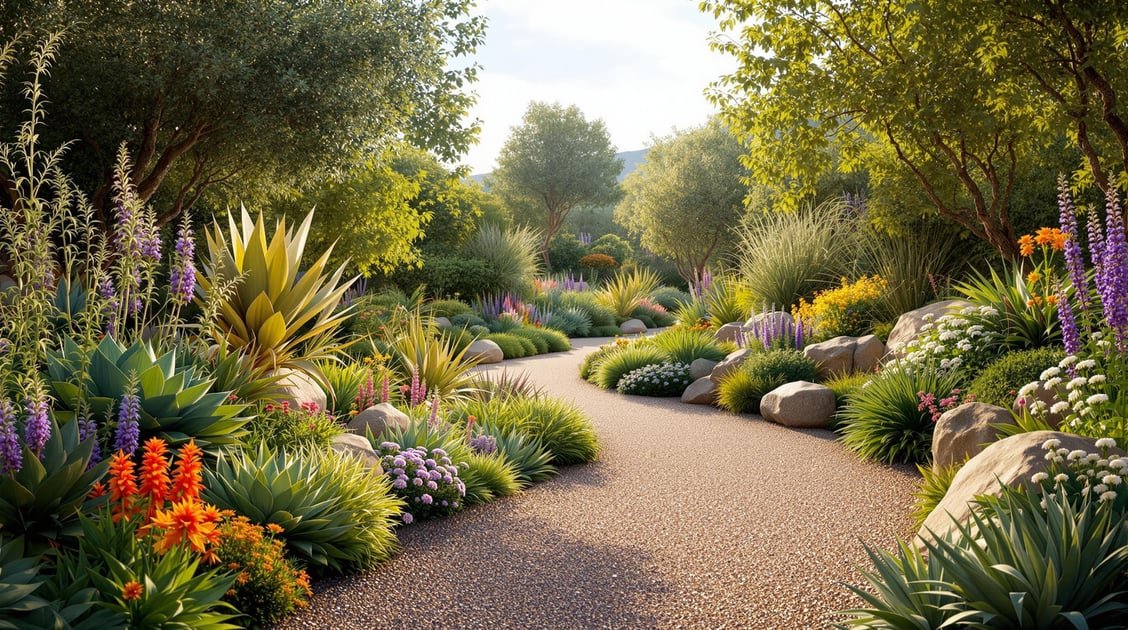
Want a stunning garden that saves water and reduces maintenance? Drought-resistant landscaping is the answer. By choosing the right plants, smart watering methods, and efficient designs, you can cut water use by 30-50% while keeping your outdoor space beautiful year-round.
Key Highlights:
- Save Water: Use drought-tolerant plants and smart irrigation like drip systems.
- Low Maintenance: Less mowing, watering, and upkeep.
- Eco-Friendly: Conserve resources and support sustainability.
- Smart Tools: AI tools like AIGardenPlanner simplify garden design and care.
Quick Tips:
- Group plants by water needs (hydrozoning).
- Replace lawns with low-water alternatives like native grasses or creeping thyme.
- Use mulch and hardscaping to retain moisture and reduce water demand.
- Collect rainwater to supplement irrigation.
With the right strategies, you can create a thriving, water-smart garden that’s easy to maintain. Let’s dive into the details!
5 Key Steps for a Drought-Tolerant Landscape

Getting Started with Drought-Resistant Design
Creating a water-efficient garden starts with understanding your space and planning wisely.
Assess Your Garden's Conditions
Take a close look at your garden to identify its specific needs and challenges. Here's what to focus on:
- Sunlight: Track how much sun different areas receive throughout the day.
- Wind: Note prevailing winds, as they can speed up evaporation.
- Soil: Check how well your soil drains. Sandy soil drains fast, while clay holds onto water longer.
- Water Flow: Observe how rainwater moves through your property to manage it effectively.
You can also identify microclimates in your garden:
| Zone Type | Characteristics | Ideal Plants |
|---|---|---|
| Hot/Dry | Full sun, high evaporation | Drought-tolerant native plants |
| Cool/Moist | Shade, retains moisture well | Shade-loving, water-saving plants |
| Transition | Mix of sun and shade | Plants with moderate water needs |
These details will guide your garden design choices.
Plan with AIGardenPlanner

Once you’ve assessed your site, use AIGardenPlanner to create a custom layout that conserves water. This tool analyzes your garden’s unique conditions and suggests efficient designs.
The AI Plant Advisor recommends plant combinations suited to your climate and soil, helping you save water while keeping your garden visually appealing.
Design tips to keep in mind:
- Group plants with similar water needs close to each other and near water sources.
- Create irrigation zones tailored to the specific needs of each plant group.
- Place deciduous trees on the southwest side to provide shade and reduce evaporation during hot months.
AIGardenPlanner also calculates shade patterns and suggests compatible plants for shaded areas. Plus, it offers growing guides to help you with placement and care.
Plants That Need Less Water
Choosing plants wisely is key when aiming to conserve water in your garden.
How Some Plants Handle Drought
Certain plants are built to thrive with minimal water. Here's how they do it:
- Specialized Leaves: Small, needle-like, or deeply indented leaves reduce water loss through evaporation.
- Protective Surfaces: Waxy coatings or fine hairs on leaves help retain moisture.
- Deep Roots: Roots that grow far into the soil can access water stored deep underground.
Top Plant Picks for Dry Conditions
Research from the University of California, Davis has highlighted plants that perform well with limited watering. Some standout options include:
- Sunny Boulevard® St. John's Wort
- Juke Box® Pyracomeles
- Pugster Blue® Butterfly Bush
"Drought-tolerant plants can be identified just by looking at them or feeling or smelling their bruised foliage. Many fragrant herbs, for example, are drought-tolerant".
Organizing Water-Use Zones
Grouping plants based on their water needs - known as hydrozoning - can help you save water. Divide your garden into these three zones:
- High-Water Zone: Place plants that need frequent watering near a water source.
- Moderate-Water Zone: Water only when plants show signs of stress, and use drip irrigation to conserve water.
- Low-Water Zone: Reserve the largest area for drought-tolerant native plants that require little to no supplemental watering.
You can use tools like AIGardenPlanner's Plant Advisor to plan your garden's zones and irrigation layouts for maximum water efficiency.
sbb-itb-4d6a8dd
🚀 Ready to Reinvent Your Garden?
Join thousands of homeowners who have transformed their gardens using our AI design tool. Upload one photo to explore endless possibilities.
Get your AI garden designs →Smart Watering Methods
Using water wisely is crucial for keeping drought-resistant landscapes thriving. Modern irrigation techniques can significantly reduce water use while keeping your garden healthy.
Drip Systems and Water Controls
Drip irrigation stands out as one of the most efficient ways to water plants, achieving up to 90% efficiency compared to the 65–75% range of traditional sprinklers. These systems deliver water directly to plant roots, cutting down on evaporation and runoff.
Here’s a quick guide to setting up a drip system based on soil type:
| Soil Type | Emitter Flow Rate | Spacing |
|---|---|---|
| Sandy | 1–2 gallons/hour | 11" |
| Loamy | 0.5–1 gallon/hour | 17" |
| Clay | 0.5 gallon/hour | 20" |
Tips for an effective drip system:
- Group plants with similar water needs on the same line.
- Use pressure-compensating emitters if your garden has elevation changes over 5 feet.
- Install smart controllers to adjust watering schedules based on weather conditions.
- Add flow meters to detect leaks early.
To take it a step further, consider collecting rainwater to supplement your irrigation efforts.
Collecting and Reusing Water
Rainwater harvesting is a great way to boost your garden’s water supply. Since rainwater is naturally soft and free of chemicals, it helps plants absorb nutrients better and grow healthier.
Here’s how to make the most of rainwater collection:
- Capture rainwater by:
- Creating basins around trees and shrubs.
- Drilling deep holes to encourage strong root systems.
- Using storage systems like above-ground cisterns (starting at $100).
- Maintain your collection systems by:
- Cleaning gutters and downspouts regularly.
- Checking for leaks in the system.
- Emptying and cleaning rain barrels once a year.
- Applying mulch around plants to retain moisture.
These methods not only save water but also ensure your garden thrives even in challenging conditions.
Water-Free Garden Design
Expanding on water-efficient plants and irrigation methods, water-free garden design incorporates additional strategies to create beautiful, low-water landscapes.
Designing such a garden combines creativity with practical planning. By selecting the right materials and layout, you can significantly reduce water use without sacrificing aesthetics.
Lawn Alternatives
Traditional lawns are becoming less practical due to water conservation concerns. For instance, Nevada is requiring grass removal by 2027, and some cities in California offer financial incentives to replace lawns.
Here are some lawn alternatives that require little water:
| Alternative | Benefits | Best Uses |
|---|---|---|
| Carex Panza | Grass-like look; drought-resistant | Lawn replacement |
| Creeping Thyme | Evergreen with seasonal blooms | Ground cover |
| Native Grasses | No mowing; naturally pest-resistant | Natural areas |
| UC Verde | Lawn-like appearance; low water needs | Play areas |
Start by removing existing grass and enriching the soil with compost before planting. For native grasses, sow seeds about 1/4 inch deep before the frost season.
"Water conservation and green living have led many people to eliminate their turf grass lawns. Though beautiful to look at and play upon, when the cost to maintain them exceeds the overall value, it's time to repurpose that ground." - Maureen Gilmer, LandscapingNetwork.com
In addition to low-water plants, using mulch and hardscaping can further improve water efficiency and enhance the structure of your garden.
Mulch and Hard Materials
Mulch and hardscaping not only reduce water use but also add visual interest to your garden. Studies show that proper mulching can lower irrigation needs by 20–25%, with some reports suggesting even greater savings.
Here’s how to get the most out of mulch:
- Spread a 3- to 4-inch layer of coarse mulch (either inorganic or shredded wood) over moist soil to retain water.
- Surround young trees with mulch, which can cut their water needs by up to 54%.
Mulched soil remains 8–13°F cooler than bare soil during summer.
Hardscaping provides functional outdoor spaces while eliminating water demand. Options include:
- Permeable gravel pathways wide enough for garden tools
- Crushed stone patios that allow water to seep through
- Large boulders placed for visual impact
- Dry creek beds, which require little upkeep
For areas that experience water runoff, consider permeable surfaces. A well-built gravel garden should have a 2-inch layer of compacted base rock topped with 1–2 inches of smaller gravel, creating a surface that manages water effectively while looking great.
Garden Care Tips
Keep your garden thriving, even during dry spells, with focused care techniques that promote resilience and health.
Plant Health Basics
Start with the soil - it’s the foundation of a healthy garden. Mix in organic materials like compost, leaves, or plant debris to improve how well the soil holds water and nutrients. When watering, aim for deep and infrequent sessions. Early morning is best to reduce evaporation and encourage strong root growth.
For pest management, aim for balance rather than total elimination. Native plants can attract helpful insects and create habitats for natural predators.
"The goal of natural garden pest control is not to eliminate garden pests, but to keep their numbers low".
And don’t forget mulch! It’s a game-changer for water efficiency. As Joe Lamp'l, Creator and Host of Growing a Greener World®, says:
"The single best thing you can do to improve your watering efficiency is to add mulch to your garden beds."
Make adjustments to your garden care routine throughout the year to support plant health as the seasons shift.
Season-by-Season Care
Spring Care
- Add a layer of compost to help the soil hold moisture.
- Mulch garden beds before the summer heat arrives.
- Inspect your irrigation system for leaks.
- Water new plants every 2–3 days until they’re established.
Summer Care
- Mow your lawn at a higher setting to shade the soil.
- Skip fertilizing during dry periods.
- Watch for signs of water stress in plants.
- Use temporary shade for plants sensitive to extreme heat.
Fall Care
- Enrich the soil with organic nutrients to prepare for winter.
- Gradually reduce watering as temperatures cool.
- Remove any dead or diseased plants to prevent issues next season.
- Add a fresh layer of mulch to protect roots.
Winter Care
- Check soil moisture during dry spells, even in colder months.
- Shield sensitive plants from frost.
- Keep mulch in place to insulate the soil.
- Start planning upgrades or changes for the next growing season.
Next Steps
Here’s how you can put the strategies we’ve discussed into action:
"Don't wait for restrictions on outdoor water use, or worse yet, an outright ban. You can begin now to assess and improve your garden so that it becomes far more 'water thrifty'."
Water Management
- Water deeply and less often, preferably early in the morning. Drip systems and rainwater collection can help you water with precision.
Soil Health
Spread a 3-inch layer of organic mulch in late winter or early spring to keep moisture in and protect roots. Boost your soil’s ability to hold water by mixing in compost during your spring and fall garden care.
Smart Plant Selection
Use tools like AIGardenPlanner’s Plant Advisor to find drought-tolerant plants that thrive in your climate. These tools can help you create a garden that looks great, even in dry conditions.
Design for Success
Make impactful changes to your landscape:
- Replace water-thirsty lawns with drought-resistant ground covers.
- Set up distinct zones based on water needs.
- Add hardscaping features to cut back on irrigated areas.
- Upgrade to efficient irrigation systems.
Take it step by step, and you’ll turn your garden into a drought-resistant space that thrives year-round.
🎨 Visualize Your Dream Garden Today!
Transform any outdoor space into a professional landscape design in minutes. Just upload a photo, choose your style, and let our AI do the rest.
Start your garden transformation now →Related posts
Related Articles
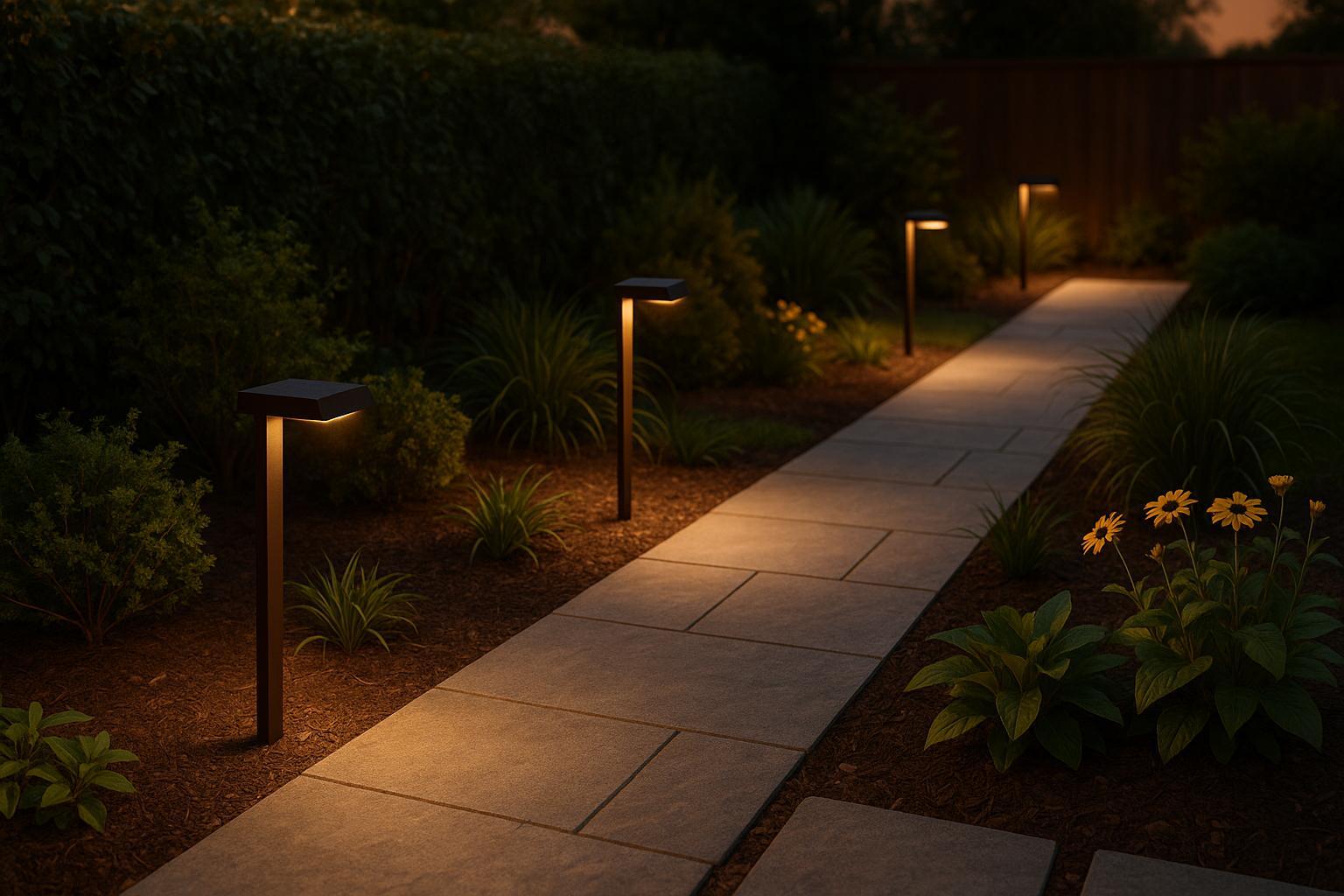
Checklist for Weatherproof Low Voltage Lighting Installation
Learn how to effectively install and maintain weatherproof low voltage lighting for your outdoor space with this comprehensive guide.

Ultimate Guide to Hosting Memorable Garden Parties
Discover the history, benefits, planning tips, themes, decorations, games, food, and more for hosting the perfect garden party. Create lasting memories in a beautiful outdoor setting!
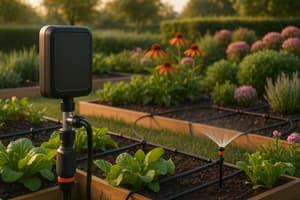
Battery Irrigation Trends for Smart Gardens
Explore the latest trends in battery-powered irrigation systems, blending smart technology and eco-friendliness for efficient garden management.

Symbolism in Chinese and Japanese Gardens
Explore the profound symbolism in Chinese and Japanese gardens, revealing how each element fosters meditation and harmony with nature.
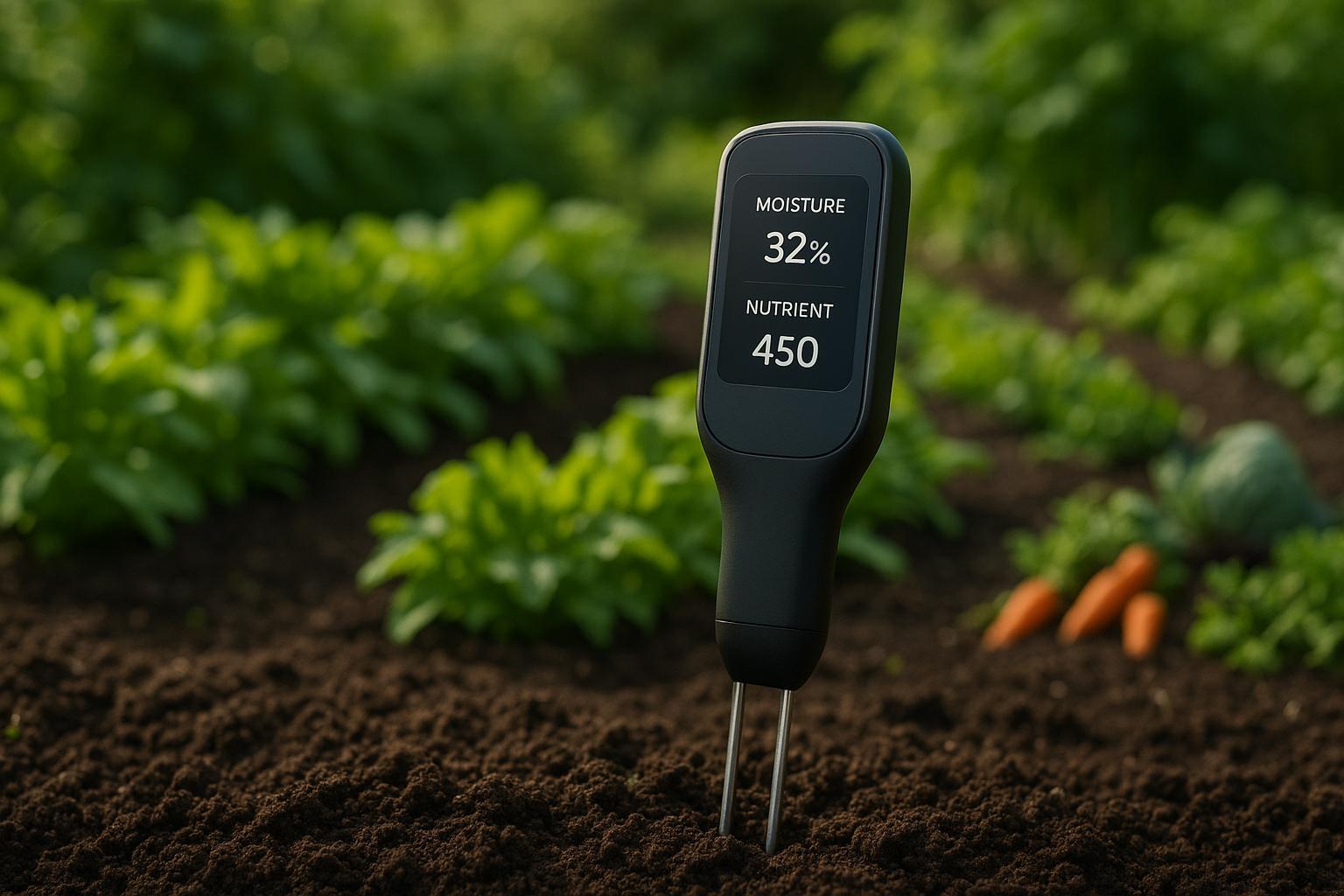
Top 7 Soil Sensors for Moisture and Nutrient Tracking
Explore the top soil sensors for monitoring moisture and nutrients, enhancing your gardening efficiency and plant health.
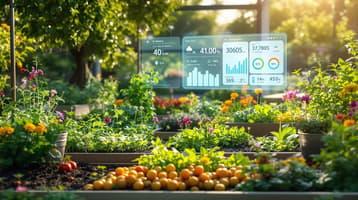
AI Tools for Adjusting Planting to Rainfall Shifts
Learn how AI tools can optimize your gardening by adjusting planting schedules and layouts based on shifting rainfall patterns.